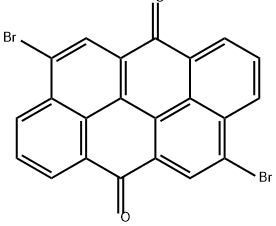3,4,9,10-Perylenetetracarboxylic diimide
- CAS NO.:81-33-4
- Empirical Formula: C24H10N2O4
- Molecular Weight: 390.35
- MDL number: MFCD00024144
- EINECS: 201-344-6
- SAFETY DATA SHEET (SDS)
- Update Date: 2025-07-28 17:37:18

What is 3,4,9,10-Perylenetetracarboxylic diimide?
Description
Pigment violet 29 is a perylene-based derivative that has a wide range of coloring applications, including paints, inks, paper, carpets, solar cells, and even drugs. Its more formal name is 3,4,9,10-perylenetetracarboxylic acid diimide.
The color of pigment violet 29 has been variously described as dark red-violet, bordeaux, black, maroon, and purple. In its solid form, its color depends on its particle size, its crystallinity, and, in some cases, the angle at which the viewer observes it.
In recent years, the US Environmental Protection Agency reviewed pigment violet 29 under the 2016 update of the Toxic Substances Control Act. In 2018, the EPA reported that the pigment “does not present an unreasonable risk of injury to human health or the environment under the conditions of use.”? The ruling was based on the compound’s low solubility, vapor pressure, and bioaccumulation potential; and, among other factors, its poor absorption across all routes of exposure.
These findings are disputed by Rep. Frank Pallone (D-NJ), who recently became chair of the House Committee on Energy and Commerce. Pallone contends that the EPA did not consider the environmental hazards of the pigment’s uses by individual companies, and he intends to hold hearings on this and other agency rulings.
Chemical properties
Dark yellow red to black solid
The Uses of 3,4,9,10-Perylenetetracarboxylic diimide
Used in chemical research. PTCDI is used extensively as an industrial pigment. It is used as tunable laser dye, light-harvesting material, transistor, molecular switched, solar cell, and optoelectronic device. Planar perylene- and naphthalene-based diimide linkers can be employed to tether the Watson- Crick and the Hoogsteen strands of a DNA triplex, thus providing conjugates capable of targeting singlestranded nucleic acids with the formation of hairpin triplexes.
Definition
ChEBI: The 3,4,9,10-tetracarboxylic diimide derivative of perylene.
Flammability and Explosibility
Not classified
Properties and Applications
|
TEST ITEMS |
SPECIFICATION |
|
APPEARANCE |
VIOLET POWDER |
|
SHADE |
REDDISH |
|
HEAT RESISTANCE |
300 °C min |
|
LIGHT FASTNESS |
8 |
|
ACID RESISTANCE |
5 |
|
ALKALI RESISTANCE |
5 |
|
FASTNESS TO BLEEDING |
5 |
|
OIL ABSORPTION |
40-45% |
|
SPECIFIC SURFACE |
28 m 2 /g |
|
DENSITY |
1.60 g/cm 3 |
|
RESIDUE ON 80 MESH |
5.0% max |
|
WATER SOLUBLE |
1.0% max |
|
VOLATITE 105 °C |
1.0% max |
|
TINTING STRENGTH |
100-105 % |
Properties of 3,4,9,10-Perylenetetracarboxylic diimide
| Melting point: | >300 oc |
| Boiling point: | 821.4±61.0 °C(Predicted) |
| Density | 1.680±0.06 g/cm3(Predicted) |
| storage temp. | Inert atmosphere,Room Temperature |
| solubility | Sulfuric Acid (Slightly) |
| form | Powder |
| appearance | maroon to purple solid |
| pka | 8.75±0.20(Predicted) |
| color | Purple to Very Dark Purple |
| Water Solubility | Insoluble in water. |
| CAS DataBase Reference | 81-33-4(CAS DataBase Reference) |
| EPA Substance Registry System | Anthra[2,1,9-def:6,5,10-d'e'f']diisoquinoline-1,3,8,10(2H,9H)-tetrone (81-33-4) |
Safety information for 3,4,9,10-Perylenetetracarboxylic diimide
| Signal word | Warning |
| Pictogram(s) |
 Exclamation Mark Irritant GHS07 |
| GHS Hazard Statements |
H302:Acute toxicity,oral H315:Skin corrosion/irritation H319:Serious eye damage/eye irritation H335:Specific target organ toxicity, single exposure;Respiratory tract irritation |
| Precautionary Statement Codes |
P261:Avoid breathing dust/fume/gas/mist/vapours/spray. P280:Wear protective gloves/protective clothing/eye protection/face protection. P301+P312:IF SWALLOWED: call a POISON CENTER or doctor/physician IF you feel unwell. P302+P352:IF ON SKIN: wash with plenty of soap and water. P305+P351+P338:IF IN EYES: Rinse cautiously with water for several minutes. Remove contact lenses, if present and easy to do. Continuerinsing. |
Computed Descriptors for 3,4,9,10-Perylenetetracarboxylic diimide
New Products
Indole Methyl Resin tert-butyl 9-methoxy-3-azaspiro[5.5]undecane-3-carboxylate Boc-His(Boc)-OH 2-CTC Resin 4-Chloro-7-tosy1-7Hpyrrolo[2,3-d]pyrimidine 5,7-Dibromo-1H-indole 2,5-dichloro-N-hydroxy-4,6-dimethylpyridine-3-carboximidamide 2,2-Dimethoxy-7-azaspiro[3.5]nonane hydrochloride 4-chloromethyl-5-methyl-1,3-dioxol-2-one (DMDO-Cl) R-2-BENZYLOXY PROPIONIC ACID 1,1’-CARBONYLDIIMIDAZOLE 1,1’-CARBONYLDI (1,2-4 TRIAZOLE) N-METHYL INDAZOLE-3-CARBOXYLIC ACID 4-((2-hydroxyethyl)thio)benzoic acid 1-(TERT-BUTOXYCARBONYL)-2-PYRROLIDINONE Methyl 6-methylnicotinate 3-Pyridineacrylic acid tert-Butyl carbazate TETRAHYDRO-2H-PYRAN-3-OL 2-((4-morpholinophenylamino) (methylthio) methylene) malononitrile 3-(4-morpholinophenylamino)-5-amino-1H-pyrazole-4-carbonitrile 2,4-dihydroxybenzaldehyde 1,3-Diethyl-1,3-Diphenylurea Methyl 2-methylquinoline-6-carboxylateRelated products of tetrahydrofuran








You may like
-
 3,4,9,10-Perylenetetracarboxylic diimide CAS 81-33-4View Details
3,4,9,10-Perylenetetracarboxylic diimide CAS 81-33-4View Details
81-33-4 -
 3,4,9,10-Perylenetetracarboxylic diimide CAS 81-33-4View Details
3,4,9,10-Perylenetetracarboxylic diimide CAS 81-33-4View Details
81-33-4 -
 3,4,9,10-Perylenetetracarboxylic Diimide CAS 81-33-4View Details
3,4,9,10-Perylenetetracarboxylic Diimide CAS 81-33-4View Details
81-33-4 -
 Pyridine 99.5% HPLC /UV SpectroscopyView Details
Pyridine 99.5% HPLC /UV SpectroscopyView Details
110-86-1 -
 Piperazine Spot supply, best priceView Details
Piperazine Spot supply, best priceView Details
110-85-0 -
 Dibutyl PhthalateView Details
Dibutyl PhthalateView Details
84-74-2 -
 Imidazole Spot supply, competitive priceView Details
Imidazole Spot supply, competitive priceView Details
288-32-4 -
 Thiourea 99% ARView Details
Thiourea 99% ARView Details
62-56-6
